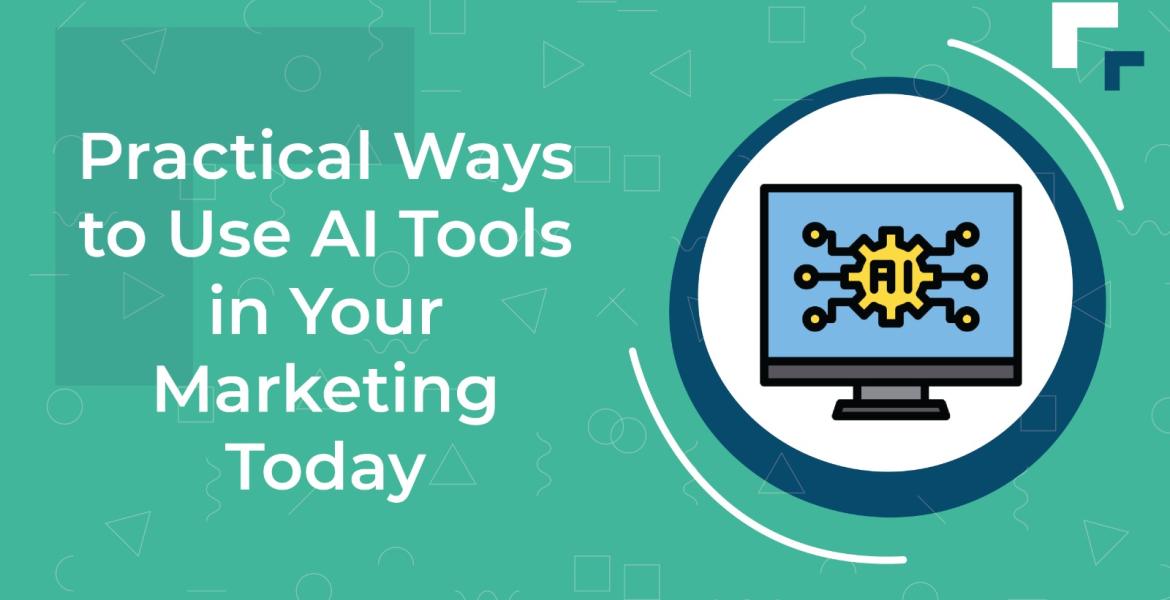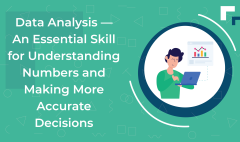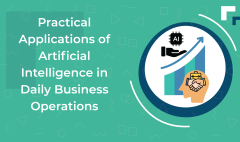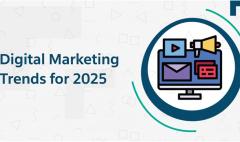Practical Ways to Use AI Tools in Your Marketing Today

Practical Ways to Use AI Tools in Your Marketing Today
Introduction
Why Artificial Intelligence Is Essential for Your Marketing Today
In a world where the need for personalized content, precise automation, and enhanced customer experience is growing, Artificial Intelligence (AI) has become an indispensable element in any modern marketing strategy. It is no longer just a “trend,” but the environment on which today’s decisions and tomorrow’s plans are built. In this article, we review practical steps to employ AI tools to improve every part of the marketing process.
1. Creating Content Intelligently and Quickly
Writing articles, emails, and social media posts
Use ChatGPT or Jasper AI to generate drafts and product pages quickly.
Use Copy.ai to produce catchy ideas for email subject lines and posts.
Practical example: Enter a title or idea, then get a complete text ready for publishing.
Improving text quality with one click
Tools like Grammarly and Wordtune correct mistakes, refine style, and offer deeper suggestions.
Example: Use an editing tool to simplify the language and switch the tone to either casual or formal, depending on the context.
2. Automating Customer Communication
Smart chatbots
Tools like Tidio and Intercom handle customer inquiries 24/7.
They can qualify leads and direct them to the right product or content.
Automated email marketing
Using Mailchimp AI or ActiveCampaign, send personalized messages based on each customer’s interaction.
Example: Automatically send a discount after a customer views a specific product for a certain period.
3. Smart Personalization at Scale
Deliver messages at the right moment
Tools like Dynamic Yield display page elements based on each visitor.
Practical example: Show different product recommendations based on browsing history.
Dynamic landing pages
Tools like Unbounce Smart Traffic automatically test content and designs for each visitor segment.
4. Intelligent SEO Optimization
Smart keyword research
Use Surfer SEO or Semrush AI to find top-performing keywords.
Automatically optimize your pages
Tools like RankMath and Yoast AI suggest improved titles, meta descriptions, and internal links.
5. Optimizing Ads and Budgets
Predictive targeting
Facebook CBO and Google Performance Max use AI to predict what consumers will buy.
Automating budgets and ad quality
AdCreative.ai tests different ad copies and improves performance simultaneously.
6. Making Data Driven Decisions Accurately
Predictive analytics
With tools like Looker and Google Analytics Intelligence, forecast upcoming campaign performance.
Real-time reports and automatic recommendations
AI analyzes and predicts results, providing tips to improve immediate performance.
7. Fast Visual Content Creation and Editing
Images and videos
Quickly generate images with DALL·E or Canva AI.
Create explainer videos from text using Pictory or Runway.
Less production time, high quality
Design images for your posts and brand assets without needing a designer.
8. Preparing for Voice and Visual Search
Optimize content for voice search
Make your articles include questions starting with “How?” and “What is?” in preparation for voice assistant searches.
Optimize images for visual search
Use description templates and data grids to improve your images’ chances of appearing in image search results.
9. Improving Influencer Marketing
Smart influencer selection
Tools like HypeAuditor analyze an influencer’s audience to identify the best fit for your brand.
Measuring performance and engagement
Use AI to track direct sales increases from posts and improve future collaborations.
10. Mapping and Personalizing the Customer Journey
Analyzing visitor behavior
Tools like Hotjar and Crazy Egg show how visitors interact with your content and website.
Improving touchpoints and conversions
Identify moments when visitors leave and make immediate adjustments to increase conversion rates.
11. Easy Social Media Management
Scheduling posts and analyzing feedback
Buffer and Hootsuite AI combine publishing, monitoring, and real-time reporting.
Suggesting phrases and hashtags
AI automatically generates catchy recommendations for posts and hashtags to achieve better reach.
12. Continuous Testing and Optimization Using AI
Automated A/B testing
VWO automatically tests different landing page versions to find the best.
Smart channel optimization
AI suggests automatic improvements for texts, images, and button placements.
13. Competitor Analysis and Opportunity Discovery
Monitoring competitor strategies
Semrush and SimilarWeb reveal content and topics competitors focus on.
Discovering market gaps
AI identifies topics that are under-covered and suggests focusing on them.
14. Choosing the Right Tools
Selection criteria
Consider cost, integration with your systems, and ease of use.
Free trials before committing
Always try tools before paying to ensure they fit your needs.
15. Practical Implementation Plan for the First Week
| Week | Goal & Method |
| 1 | Try an open content tool like ChatGPT or Jasper |
| 2 | Add editing and proofreading with Grammarly |
| 3 | Activate a lightweight chatbot on your site |
| 4 | Start simple email campaigns with AI personalization |
| 5 | Monitor improvements and gradually adjust strategy |
Conclusion
Companies adopting AI tools today are excelling with less effort, shorter timeframes, and higher quality. You don’t need to be a tech expert to benefit. Start small, try the practical examples above, and gradually expand according to your needs.
AI is not a replacement for you but a partner that accelerates your steps, strengthens your decisions, and opens new horizons in digital marketing. Now, it’s your turn to engage, experiment, and evolve.
FAQs
- Do I need a technical background to use AI in marketing?
No, most tools come with easy-to-use interfaces and guide you every step of the way. - What free tools are useful for small businesses?
Try the free version of ChatGPT, Canva AI, Mailchimp, and Tidio to start. - When will I see actual results?
You can start noticing improvements in engagement and sales within 2–4 weeks of proper implementation. - Does the AI-generated content comply with SEO requirements?
Yes, if you optimize it with tools like Surfer SEO or RankMath. - Can I scale marketing without hiring more staff?
Absolutely. AI enables you to distribute multiple tasks within the same team, focusing on idea development and deep planning.





